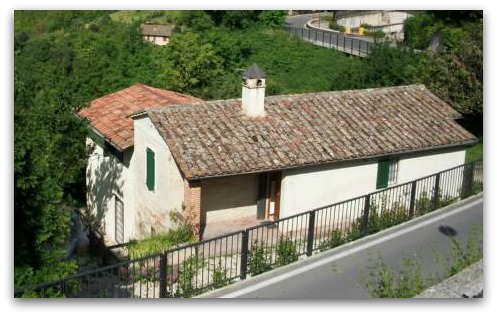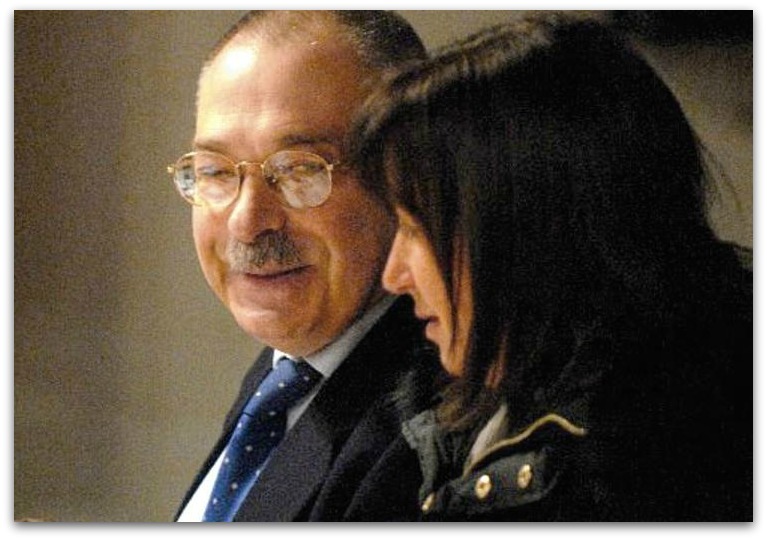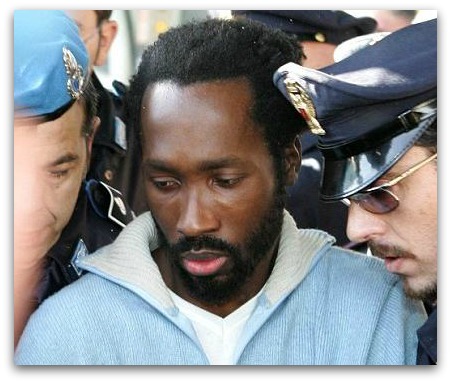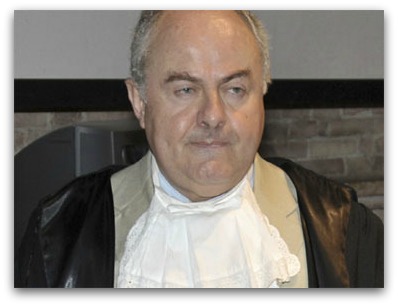Injustice in Perugia
a website detailing the wrongful conviction of Amanda Knox & Raffaele Sollecito
Case Summary
Amanda Knox
Raffaele Sollecito
Meredith Kercher
Much has been written about what is known around the world as "The Amanda Knox Case." A lot of this has been based on inaccurate information, innuendo substituted as facts, and at times, outright lies. Some say this case is a mystery, but if you learn the real facts, it is not mysterious at all. The evidence in the case clearly points to the perpetrator, Rudy Guede, a man who admits to being present at the crime scene at the time of the murder, and has been convicted and jailed for the crime.
The real mystery is: Why do Italian authorities continue to try to convict Amanda Knox and Raffaele Sollecito, when they have already found and convicted the true killer? When the evidence against them is extremely weak/non-existent? We invite you to read on, review the case in detail, and decide for yourself.
The victim of this tragic murder is Meredith Kercher, a beautiful, intelligent young woman who had traveled from Coulsdon, in South London to spend a year studying in Perugia, Italy. Meredith had studied European Studies at the University of Leeds, and was just beginning a one-year course in modern history, political theories and history of cinema at the University of Perugia. She was a bright, vibrant 21-year-old who was interested in pursuing a career in journalism.
Meredith shared a cottage in Perugia with three other women: Two Italian women in their late 20s, Filomena Romanelli and Laura Mezzetti, and 20-year-old American Amanda Knox. The cottage was on the outskirts of Perugia and was split into two levels, with four young men living in the lower half that was separate from the upper level where the four women lived.
On November 1st, 2007, Meredith Kercher was found brutally murdered in her bedroom at the cottage. She was found mostly nude, and had been stabbed in the throat with a knife. The location of her wounds had caused her to not only bleed, but aspirate her blood onto walls, the floor, and her own body. It is clear that anyone that participated in her killing could not have avoided being stained by Meredith's blood.
This horrific crime shocked the town of Perugia, which relies on the thousands of foreign students who come there each year for much of their economy. Soon, the media was reporting the shocking details of the murder of a beautiful young female student, and speculating on what could have happened. For the Perugian authorities, there was intense pressure to solve the murder quickly. Amanda Knox immediately became a person of interest to investigators, mostly, as they would testify later, because they thought her behavior was out of the ordinary. Amanda was the first flatmate that the police encountered when they arrived on the scene, and she became their first suspect.
On the night of November 1, 2007, all of the flat mates were away from the cottage for the night, except for Meredith Kercher, who would be spending the night in the cottage alone. The four young men that lived in the bottom flat had left Perugia to go home for a long holiday weekend, and the other 3 women, Filomena, Laura, and Amanda, were spending the night with their boyfriends in other locations. Amanda Knox had started a relationship with her new boyfriend, Raffaele Sollecito, only 6 days before, and planned to spend the night with him at his apartment.
The next morning, Amanda left Raffaele's apartment and walked to the cottage, to shower and change clothes before going on a sightseeing trip they had planned. When she arrived at the cottage, she found the front door open, but at first did not think that was odd -- the door lock did not latch correctly unless locked with a key, and she assumed maybe one of her flatmates had left just for a few minutes. So she came inside to take a shower.
In the bathroom, she noticed some small spots of blood in the sink as well as a light stain on the bathmat. She wasn't overly concerned because it was a small amount of blood, but the blood combined with the open door got her feeling a bit uneasy. After her shower, Amanda went to the other bathroom in the cottage to use a hairdryer. She noticed that the toilet in that bathroom had been left unflushed, which she found to be very unusual. She also noticed that her flatmate Meredith's bedroom door was locked. Amanda decided to head back to Raffaele's to let him know what she had seen. She asked him to return to the cottage with her to check things out. When Amanda and Raffaele returned to her cottage, they noticed that the window in one of her Italian flatmate's bedrooms had been broken. Amanda also tried to call Meredith, but she did not answer. Amanda became concerned, and called Filomena, and then asked Raffaele to call the police.
The Postal Police were the first to arrive (this in the Italian police force that handles crimes related to computers and cell phones). They arrived to investigate two cell phones that had been found in a nearby garden. The Carabinieri (Italian Military Police) arrived shortly after the Postal Police in response to Raffaele's call. The locked door to Meredith's room was forced open and Meredith Kercher's body was discovered. It was immediately clear that Meredith had been murdered.
The police quickly rushed everyone from the cottage, and began to investigate the crime. Amanda and Raffaele had to wait outside the cottage for instructions, and Amanda was shocked and scared at the idea that her friend had been murdered in her bedroom, right next to Amanda's own room. Raffeale was trying to console and calm Amanda, and they were seen kissing outside the cottage. The police found this behavior odd, and it was later used as evidence that they may have been involved in the murder. This began a series of misinterpretations of the young student couple's behavior that caused the police to suspect them, even when the evidence should have been leading them elsewhere.
Amanda Knox was repeatedly questioned by police for many hours in the days following the murder. The police had not yet analyzed the forensic evidence, but were convinced the two must be involved by what one police commander said was intuition, based on their behavior alone. On the evening of November 5th and into the early hours of November 6th, Amanda endured a long aggressive interrogation, by as many as 12 police shouting at her in Italian, a language she was just beginning to learn. Amanda later stated she had been hit repeatedly on the back of the head and called a stupid liar. She was told that she was going to prison for 30 years if she did not tell the police what they said she was hiding. She was told that they had proof that she was at the crime scene at the time of the murder, and must have repressed the memory. According to Amanda, the police told her she would go to jail and never see her family again if she did not tell them what happened. She told them she didn't know what happened, because she wasn't there, but they refused to believe her.
The night of the murder, Amanda had originally planned to go to work at a local pub, but at around 8:30 p.m. she received a text message from her boss, Patrick Lumumba, telling her she did not need to come in, because the pub was not very busy. Amanda had replied, in her novice Italian, saying, "Sure. See you later, good evening". In english, "see you later" simply means "good bye". The police took it literally and accused Amanda of agreeing to meet up with Lumumba later that night. They also ignored the phrase, "good evening" entirely, which meant "good night". Amanda had no plans to meet Patrick that night, and if the police had investigated properly, Patrick had an airtight alibi, having been in the bar all night. But the police demanded that Amanda tell them where she went with Patrick, and what really happened to Meredith. According to Amanda, even the interpreter, who was there only to translate, told her she might be repressing the memory of what happened. After all the pressure and accusations, scared and sleep deprived close to 2 a.m., Amanda began to believe they were right, maybe she did know something.
At one point, Amanda asked if she should have an attorney, and was told that getting an attorney would only make things worse for her. Frightened, exhausted, facing a dozen Italian police alone, Amanda gave in to the interrogators demands. She described to them what she imagined might have happened, in the form of an dream or vision. In this imaginary vision, she was in the kitchen of the cottage covering her ears to block out screams while the man she worked for, Patrick Lumumba, was in Meredith's bedroom, committing the murder.
Amanda, Raffaele, and Patrick were arrested early in the morning of the 6th for the murder of Meredith Kercher. Before she was taken to prison, Knox, who still had not seen a lawyer, wrote police a letter, explaining what happened in the interrogation (although it is clear she did not really understand what had happened herself and was still confused, until several days later).
Amanda wrote: "This is very strange, I know, but really what happened is as confusing to me as it is to everyone else. I have been told there is hard evidence saying that I was at the place of the murder of my friend when it happened. This, I want to confirm, is something that to me, if asked a few days ago, would be impossible." She wrote that memories and "flashes of blurred images" had begun mingling in her mind: "In regards to this 'confession' that I made last night, I want to make clear that I'm very doubtful of the verity of my statements because they were made under the pressures of stress, shock and extreme exhaustion. Not only was I told I would be arrested and put in jail for 30 years, but I was also hit in the head when I didn't remember a fact correctly."
It should be noted that the interrogation of Amanda Knox was ruled inadmissible as evidence against her for the murder, because as a suspect, she should have been given a lawyer.
After the arrest of the three suspects, the police held a press conference stating that they had evidence that all three killed Meredith because she refused to participate in a sex game. They boasted that the case was solid. They were even bold enough to announce, "case closed."
The problem was, they had barely begun to study the actual forensic evidence. And when that evidence started coming in, the police had a problem. There was substantial evidence pointing to the presence at the crime scene of a 4th suspect, Rudy Guede, and almost nothing pointing to Amanda, Raffaele, or Patrick. Guede left a handprint in Meredith's blood, in the room where she was killed. His DNA was found on and inside Meredith. He had also left his DNA on Meredith's purse. His DNA was also linked to feces left in the toilet.
There was also another problem: Patrick Lumumba had an unshakable alibi. He had witnesses that were with him in his pub all evening. He was released.
Rudy Guede had fled to Germany and was extradited back to Italy. The evidence against Rudy Guede was overwhelming. He even had a history of breaking into homes and offices by throwing a rock through the window, the same situation found at the cottage.
At this time the authorities, led by prosecutor Mignini, should have realized their mistake. It wasn't a sex game gone wrong. Rudy Guede attacked and murdered Meredith Kercher.
But the authorities, who had made such a big production to the media about solving the crime earlier, refused to admit their mistake. They simply pulled Patrick Lumumba out of their fantasy and plugged in Rudy Guede. The prosecution pushed forward to prove that Meredith was murdered by this "revised" trio in a sex game gone wrong.
The media was in a frenzy. The focus was on Amanda Knox, who they portrayed as a sex crazed murderer. Her nickname found on her myspace page "Foxy Knoxy" was used in reference to her sex life. In reality, it was a nick name that she was given on the soccer field as a child, because she was a wily defender. The prosecution leaked stories to the press to assassinate the character of Amanda. A photograph was shown of Amanda kissing Raffaele outside the crime scene, and it was spun into a story that the two were more interested in making out than in Meredith's death (the kisses were small "pecks"). In reality, Amanda was terrified. Raffaele was simply comforting her.
As Amanda and Raffaele sat in jail, the media published more and more salacious reports about them, painting a story of two sex and drug crazed maniacs. Anything they had done, no matter how normal or innocent, was reported as somehow crazy and evil. For example, Amanda and Raffaele were seen buying underwear in a generic clothing store in Perugia. The stories that were written were that they had gone to a sexy lingerie store, were buying thong underwear and were talking about having wild sex. In reality, Amanda was locked out of the cottage because it was a crime scene and she needed clothes.
The prosecution also released information that Amanda had been doing cartwheels at the police station. This was used to paint her as callous and unstable. The truth is, she had been waiting for hours at the police station while the police were questioning Raffaele. The whole situation was very scary and stressful for a 20 year old college girl, so while she was waiting she did some yoga stretches to deal with her stress. The police described this to reporters as "cartwheels", and the story of the crazed murder Amanda was splashed across the front page headlines the next day. What kind of demented person would be doing cartwheels in a police station? We don't know, because it wasn't true.
Amanda and Raffaele's families came to Perugia and got them attorneys, but the damage was done. Public opinion had been successfully molded by the prosecution and the media.
Rudy Guede chose a fast-track trial and was found guilty of murdering Meredith Kercher. He was sentenced to 30 years in prison. His conviction was later confirmed on appeal. His sentence was reduced to 16 years.
Despite no previous record of violence of any sort, Amanda and Raffaele were refused house arrest and ordered held in prison until trial. Judge Claudia Matteini refused to grant Amanda Knox's request for house arrest during the trial, noting that Amanda had shown no remorse. But why would Amanda show remorse for a crime she didn't commit?
Judge Claudia Matteini wrote: "In such a situation the danger of repetition of the crime is certainly very high and can't be considered to have diminished due to the mere passage of time, during which -- as a reminder -- you have never shown any sign of remorse or reconsideration of your life." Keep in mind, Amanda hadn't even gone to trial to defend herself at that point. But this judge expected to see remorse. This is just one more example of how guilt was decided from the start.
After spending more than a year in prison, Amanda and Raffaele's trial started on January 16, 2009. The Jury was not sequestered. They had all heard for the past year all about Amanda Knox in the media. The media had convicted her long before the trial started. The jury was still allowed to listen to the media, and discuss the case with each other, the lawyers, or anyone else, while the trial was in progress. That is standard procedure in Italy. The media continued to publish bizarre, made up stories about Amanda Knox. Raffaele was an afterthought, depicted as a poor sap who was led into committing the murder by the devious Amanda.
Many people believe that the jury's mind was made up before the trial even started. The prosecutor, Giuliano Mignini, is a very powerful man in Italy, and controlled the trial from start to finish. He was allowed to prosecute this case even though he was on trial himself at the same time for abusing the power of his office.
There was little believable evidence against Amanda and Raffaele, and no motive. So Mignini had to invent some theories that were unusual, to say the least. Mignini presented wild fantasies in the courtroom of a sex game gone wrong. He provided no evidence to back up any of his claims. He even showed an animated cartoon repeatedly to the jury, showing Amanda Knox stabbing Meredith as Raffaele and Rudy held her on her knees. He wanted the jury to believe that the three of them were all attacking Meredith in her small bedroom, even though Rudy was the only one that got blood on his clothes, and the only one who left fingerprints and footprints in the bedroom.
Since there was little else to show that Amanda and Raffaele were even at the cottage during the murder, flawed DNA tests were used to try and put Amanda and Raffaele at the crime scene. The forensic scientists and other "experts" that work for the police testified about this DNA, while "experts" that testified for the defense said the process of collecting and testing the DNA was faulty, using processes that were not reliable and subject to contamination. Since the "experts" did not agree, the defense team asked for an independent review of the DNA but it was denied by the Judge. He said there was already enough information to decide.
The defense did an excellent job refuting the limited amount of evidence that was presented by the prosecution, but it seemed like the minds of the jury were already made up. The defense, on several occasions, had to ask the judge for a recess because members of the jury had fallen asleep. The judge was also seen taking cell phone calls during the defense team's presentation. Amanda and Raffaele were considered guilty long before the trial started.
On December 4, 2009, in the final act of this horrible injustice, Amanda Knox and Raffaele Sollecito were convicted of murdering Meredith Kercher. They were sentenced to 25 years in prison for Raffaele, and 26 years for Amanda (she was given an extra year for the crime of Calunnia, or Slander, for falsely accusing Patrick Lumumba).
Italian courts are required to write a "motivation" report explaining the reasoning behind verdicts in serious crimes. The judge, Dr. Giancarlo Massei, released the court's explanation of the ruling on March 4, 2010.
An actual court had now convicted Amanda and Raffaele of the murder, which led many people to believe they must be guilty. But the motivation report, since translated into English, was a startling document, filled with conjecture and guessing, rather than confirmation of any clear evidence proving their guilt beyond a reasonable doubt (the legal standard in Italy, as it is in the United States, and the UK). The judge consistently accepts the prosecution version of each evidence point, dismissing the defense version, even when the defense version seemed to make more sense, and was backed by expert testimony. The Massei motivation report is filled with references to things that point to Amanda and Raffaele's guilt being, "possible, and therefore probable". The report says the murder was not premeditated, and there was no known motive (prosecutor Mignini changed the motive several times during the trial, moving from the "sex game" to a disagreement about cleaning the cottage, to saying the motive is not known). One example of the reasoning in the motivation is the explanation of how a large kitchen knife that was found at Raffaele's apartment could have ended up over at the cottage. Judge Massei concludes that Raffaele must have given it to Amanda to carry in her tote bag for protection when she walked around Perugia at night. This was a very large kitchen knife, the type that people use to cut bread or meat. Who ever heard of a young woman carrying such a knife around in her tote bag? Wouldn't someone have seen it, and wouldn't it have made cuts in her bag or in the other items she carried in there? They might have, except it never happened, and no evidence of this was ever presented in court. The judge didn't have a theory that fit the evidence, so he made one up. It appears that the court had made up it's mind before any evidence was presented. They knew Amanda and Raffaele must be guilty --- they just couldn't prove it.
At this point, Amanda and Raffaele had been in prison for 3 years, two innocent college kids serving time with real killers, rapists and other violent criminals. The only good news is that Italian law allows for an automatic appeal, which is a complete second trial, that reviews all the evidence and confirms or rejects the verdict given in the first trial. On November 24, 2010, the appeal trial opened in Perugia with Judge Claudio Pratillo Hellmann as the presiding judge.
At the start of the appeal trial, there is some small reason for Amanda and Raffaele to hope. One of the judges tells the courtroom: "We know only one thing for certain: Meredith Kercher is dead." That seemed to signal that this court would indeed re-examine the entire case, with an open mind this time.
In addition to reviewing all of the previous evidence and testimony from the first trial, Judge Hellmann decided to grant the defense request for an independent review of key DNA evidence, specifically two disputed DNA samples that were used by the prosecution to link Amanda and Raffaele to the crime scene. These samples were from a large kitchen knife found in Raffaele's apartment, and the severed clasp of Meredith Kercher's bra, which was claimed to have Raffaele's DNA on it. (see our pages about the knife, bra clasp, and other evidence to learn more about these details).
Carla Vecchiotti and Stefano Conti of the University of Rome were appointed by the judge to conduct an independent review of this evidence, which (like most of the evidence in the case) had long been seriously questioned by Knox and Sollecito’s defense teams and by many outside observers.
On June 29, 2011, the independent experts appointed by the judge presented their report. The conclusions reached by Conti and Vecchiotti constitute a damning indictment of the investigation conducted by Italy’s Scientific Police, and in particular of the methods employed by the prosecution’s main forensic scientist, Dr. Patrizia Stefanoni. In short, Conti and Vecchiotti concluded that both of these pieces of DNA evidence are completely unreliable, and very likely contaminated.
The appeal court also decided to rehear the testimony of Antonio Curatolo, the homeless heroin dealer/addict who had testified to seeing Amanda and Raffaele near the cottage on the night of the murder. Curatolo, who was brought from jail to testify (and is now deceased), gave contradictory facts, seemed confused as to why he was in jail, and was ultimately deemed unreliable as a witness by the jury.
On the last day of the trial, Raffaele and Amanda both gave impassioned statements to the court, declaring that they are both innocent. Raffeale addressed the judge and jury, stating that he and Amanda have committed no crime, and dramatically removing a bracelet that he had worn for 4 years, with the inscription, "Free Amanda and Raffaele". He told them it was time to take it off, because it was time to go home.
Then it was Amanda's turn. She frequently paused for breath and fought back tears, speaking in her now fluent Italian to the jury in a packed courtroom. She told the jury clearly that she did not kill her British roommate, Meredith. Amanda told the court: "And if I would have been home that night, I'd be dead. I would have been killed just like her. The only difference is I was not there. I was with Raffaele, at Raffaele's place."
She went on to explain what happened the night of her interrogation, and how she ended up making the statements about being at the cottage with Patrick Lumumba: "I had a sense of duty before authorities which I trusted because they were there to find out who the culprit was, there to protect us. I blindly trusted them wholly, completely, absolutely. And when I made myself available up to the point of utter exhaustion those days, I was betrayed starting Nov. 5. I wasn't only stressed. I was manipulated."
Then, dramatically, Amanda told the court: "I didn't do what they say I did. I didn't kill. I didn't rape. I didn't steal. I was not there." ... "I want to go home, I want to go back to my life, I do not want to be punished and to have my life taken away from me for something I have not done, because I am innocent."
Later that day, October 3, 2011, Judge Hellmann read the verdict in Amanda and Raffaele's appeal. In a strongly worded verdict, they were both declared not guilty of the murder, and they were both immediately set free. In his motivation report, Judge Hellmann declared that the case could not be proven against them, and stated that all of the key evidence against Amanda and Raffaele was unreliable. He also called the first court to task for applying an incorrect standard of proof against the two, by repeatedly using the terms "probably" to describe what the court thought happened. According to Judge Hellmann, "probably" is not beyond a reasonable doubt, and most of the "probablys" were not probable at all.
Amanda Knox returned to Seattle to be with her family and friends, and Raffaele returned to his home in Bari, in Southern Italy. It had been a long four years, but they were free at last.
In the Italian justice system, there is a 3rd stage where the court of Cassasion (Italian Supreme Court) reviews the 2nd level verdict, and either confirms it, or rejects it and sends it back to be tried again at the appeal level. Amanda and Raffaele waited over a year for the Supreme Court to rule on their case. On March 26, 2013 the Supreme Court announced their ruling: that Amanda and Raffaele would have to stand trial again for the murder of Meredith Kercher.
The apeal trial began on September 30, 2013, in Florence, Italy. On January 30, 2014, the Florence court reinstated the guilty verdicts for Amanda and Raffaele. On January 30, 2014, the appeals court in Florence reinstated the guilty verdicts for Amanda and Raffaele. The court released a motivation document on April 29, 2014, explaining the decision. Amanda and Raffaele will now appeal of the guilty verdicts to the Italian Supreme Court.
For over 6 years, the Italian authorities have refused to see what the evidence is clearly telling them. The Knox and Sollecito families have the continued burden of fighting this injustice, and Meredith Kercher's family continues to wonder who killed their daughter, when the answer would be clear if the police would stop this circus and admit they made a mistake.
Carla Vecchiotti and Stefano Conti
Rudy Guede
Lead Prosecutor Giuliano Mignini
Written by Douglas Matthews
Additional Resources
Professional Analysis
Injustice in Perugia
The Appeal
The Victim
Meredith's Killer
Wrongfully Convicted
About Us/Contact Us








